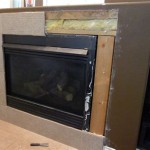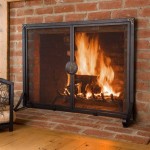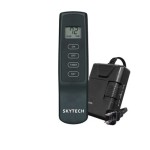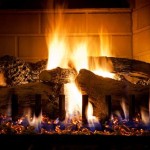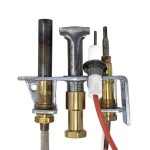Fireplace Insulation Blankets: Enhancing Efficiency and Safety
Fireplaces have long been valued for their aesthetic appeal and comforting warmth. However, traditional fireplaces can be inefficient, losing a significant amount of heat up the chimney when not in use. This inefficiency translates to higher energy bills and reduced overall comfort within the home. One solution gaining increasing attention is the use of fireplace insulation blankets, also known as fireplace draft stoppers or chimney balloons.
A fireplace insulation blanket is a device designed to seal off the fireplace opening when it is not in use. This seal prevents cold air from entering the home through the chimney and warm air from escaping. These blankets come in various materials and designs, each offering unique benefits in terms of insulation, ease of use, and durability. Understanding the functionality, benefits, and considerations involved in selecting and using a fireplace insulation blanket is crucial for maximizing its effectiveness and ensuring safety.
Understanding the Functionality of Fireplace Insulation Blankets
The primary function of a fireplace insulation blanket is to create an airtight barrier within the chimney flue. This barrier effectively stops the flow of air, preventing drafts from entering the home. Uninsulated chimneys act as a significant source of heat loss, particularly during colder months. Warm air rises naturally, and in the absence of a proper seal, it will escape through the chimney, creating a negative pressure within the home. This negative pressure pulls in cold air through cracks, windows, and other openings, forcing the heating system to work harder to maintain a comfortable temperature.
Fireplace insulation blankets work by physically blocking the chimney flue. Various designs achieve this goal. Some blankets are inflatable, expanding to fill the chimney opening and create a tight seal against the chimney walls. Others are made of dense, insulating materials that are cut to size and manually inserted into the flue. The specific design and material chosen will impact the level of insulation provided and the ease of installation and removal. Regardless of the design, the core principle remains the same: to create an airtight seal that prevents air movement.
The effectiveness of a fireplace insulation blanket depends on several factors, including the fit, the material of construction, and the proper installation. A poorly fitting blanket will not create an effective seal, allowing air to leak around the edges. Similarly, a blanket made of a low-quality, non-insulating material will not provide adequate thermal resistance. Proper installation, following the manufacturer's instructions, is essential to ensure that the blanket is securely in place and effectively blocking the flue.
Benefits of Using a Fireplace Insulation Blanket
The benefits of using a fireplace insulation blanket extend beyond simply reducing drafts. These benefits contribute to overall energy efficiency, improved comfort, and potential cost savings.
Energy Efficiency: By preventing heat loss through the chimney, fireplace insulation blankets significantly improve energy efficiency. Less heat escaping means the heating system does not have to work as hard to maintain a comfortable temperature. This reduced energy consumption translates directly into lower heating bills. In addition, by preventing cold drafts from entering the home, the blankets help to maintain a more consistent temperature throughout the living space, further reducing the workload on the heating system.
Improved Comfort: Drafts emanating from the fireplace can create cold spots within the home, making rooms feel uncomfortable even when the heating system is running. A fireplace insulation blanket eliminates these drafts, creating a more consistent and comfortable indoor environment. This is particularly noticeable in rooms with fireplaces, where drafts can be especially pronounced.
Reduced Noise: Chimneys can act as conduits for outside noise, allowing sounds from the street or surrounding areas to enter the home. A fireplace insulation blanket can help to dampen these noises, creating a quieter and more peaceful living environment. The dense material of the blanket acts as a barrier, absorbing and reducing the transmission of sound waves.
Pest Prevention: Chimneys can also provide access points for pests such as birds, squirrels, and insects. A fireplace insulation blanket effectively blocks these entry points, preventing unwanted visitors from entering the home. This is particularly important during the winter months when animals are seeking shelter from the cold.
Cost Savings: The cumulative effect of these benefits translates into tangible cost savings. Reduced energy consumption leads to lower heating bills, and preventing pest infestations can avoid costly repairs. While the initial investment in a fireplace insulation blanket may seem small, the long-term benefits can result in significant savings over time.
Key Considerations When Choosing and Using a Fireplace Insulation Blanket
Selecting the appropriate fireplace insulation blanket requires careful consideration of several factors, including the size and shape of the chimney flue, the type of fireplace, and the desired level of insulation. Proper installation and maintenance are also crucial for ensuring optimal performance and safety.
Sizing and Fit: The most critical factor is ensuring that the blanket is the correct size for the chimney flue. An improperly sized blanket will not create a tight seal, rendering it ineffective. Measure the dimensions of the flue carefully before purchasing a blanket. Many manufacturers offer sizing charts or guides to help customers select the appropriate size. Inflatable blankets offer some flexibility in sizing, as they can expand to fill a slightly wider range of flue dimensions. However, it is still important to choose a size that is reasonably close to the actual flue dimensions.
Material and Insulation Value: Fireplace insulation blankets are made from a variety of materials, each with different insulation properties. Common materials include inflatable vinyl, dense foam, and insulated fabrics. Inflatable vinyl blankets are generally less expensive but offer lower insulation value compared to dense foam or insulated fabrics. Foam and fabric blankets provide better thermal resistance and can significantly reduce heat loss. Consider the climate and the desired level of insulation when selecting a material. In colder climates, a blanket with a higher insulation value is recommended.
Safety Considerations: It is crucial to remember to remove the fireplace insulation blanket before using the fireplace. Failure to do so can result in a fire hazard, as the blanket can ignite and send flames up the chimney. Many blankets are equipped with a prominent warning label or reminder tag to prevent accidental use. It is also advisable to store the blanket in a safe place away from heat and flames when not in use. Regular inspection of the blanket for signs of damage or wear is also recommended. Replace the blanket if it shows signs of deterioration, such as tears, punctures, or discoloration.
Ease of Installation and Removal: Some fireplace insulation blankets are easier to install and remove than others. Inflatable blankets are generally simple to install, requiring only inflation to fill the flue. However, they may require deflation and reinflation periodically to maintain a tight seal. Foam and fabric blankets may require more effort to install, as they need to be cut to size and manually inserted into the flue. Consider the ease of installation and removal when selecting a blanket, especially if you plan to use the fireplace frequently.
Type of Fireplace: The type of fireplace can also influence the choice of insulation blanket. Some fireplaces, such as gas fireplaces, may have specific requirements or restrictions regarding the use of insulation blankets. Consult the fireplace manufacturer's instructions or a qualified professional before using an insulation blanket with a gas fireplace. For wood-burning fireplaces, it is especially important to ensure that the chimney is properly cleaned and inspected before using an insulation blanket, as creosote buildup can pose a fire hazard.
By carefully considering these factors and following the manufacturer's instructions, homeowners can effectively utilize fireplace insulation blankets to improve energy efficiency, enhance comfort, and reduce heating costs while ensuring the safe operation of their fireplaces.

Aluminium Silicate Wool Seal Fireplace Mat Fireproof Ceramic Fiber Insulation Blanket China Kiln Made In Com

Ct Fireplace Insulation Ceramic Fiber Aluminum Foil Blanket China Wool Made In Com

Ct Fireplace Insulation Ceramic Fiber Aluminum Foil Blanket China Wool Made In Com

Semicircular Fireplace Fireproof Mat Used For Wooden Fireplaces Carpet Protection Silicone Flame Ant Insulation Blanket

Cadara Fireplace Blocker Blanket Stops Overnight Heat Loss Draft Stopper Save Energy Indoor Cover Insulation Black 39 W X 32 H Yahoo Ping

Fireplace Fiberglass Fiber Glass Fabric Insulation Fire Blanket China Cloth Made In Com

Trayknick Fireplace Blanket Foldable Insulation Windproof Reusable Space Saving Keep Drafts Out Stops Heat Loss Oxford Cloth Draft Stopper Energy Saver For Living Room L Ca

How To Insulate A Fireplace

Luyangwool Aluminium Silicate Wool Seal Fireplace Mat Fireproof Ceramic Fiber Insulation Blanket China Thermal Made In Com

Valor Insulation Blanket 530 539 550 4000206 Friendly Fires
Related Posts


